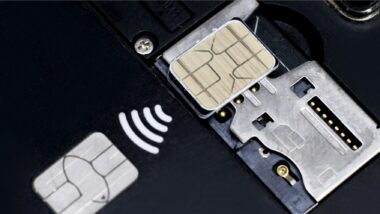With consumers soon having a range of different mobile payment methods at their disposal, some may be unsure which solution suits them best. Paypal, Payzen, iZettle, Google Wallet, Square, PayWave, PayPass, ISIS and a host of others have all hit the market in recent years, giving consumers a great deal of choice when it comes to picking their preferred method.
Some may argue that there is too much choice, with each new launch making it harder for consumers to understand every offer. And this, in turn, raises the prospect of some people steering clear of mobile payments altogether, due to a lack of understanding of their options.
Here are the main types of solution for those looking to adopt mobile payment:
Cloud-based
How it works: enables the user to link one or several banking cards then simply pay in store with a mobile app.
Examples: Paypal, Square Wallet
Benefits:
– Can include other features like loyalty, rewards and couponing
– User registration is easy and convenient
Drawbacks:
– Transport and access options not available
– Requires specific terminals which are not widely available, and currently only seen in the US
– Security is questionable, as storing sensitive information in the cloud can present risks for the user. For instance, Twitter and Facebook have both suffered recent security breaches
Cloud + embedded secure element
How it works: Users need to purchase a compatible Android phone, install the Google Wallet app and link a banking card which details will be stored in the cloud. A prepaid MasterCard application stored in the phone with an embedded secure element will draw funds from the linked card during a payment at any Paypass contactless POS terminal (EMV).
Example: Google Wallet v2
Benefits:
– Enrolment is fast
– Coupons, special offers available
Drawbacks:
– Transport and access options not available
– Cloud element still has question marks over security
– Each payment involves 2 transactions (and commission fees) instead of one. Is the business model viable?
Embedded secure element wallet
How it works: Several handset makers have already started investigating NFC smartphones equipped with an embedded secure element designed to host payment applications. Once the service is available, consumers will need to subscribe through their bank, which will personalize their handset with their banking card details.
Example: Samsung
Benefit:
– Compatible with every merchant equipped with a contactless EMV terminal
Drawbacks:
– In the case of handset loss or theft, it is uncertain whether the bank or handset maker would be responsible for cancellations, complaints etc.
– The secure element is soldered into the smartphone so cannot be switched. This could cause issues, given that the average handset is only switched every 18 months
SIM-based wallet
How it works: Users request a compatible SIM from their mobile network operator for their NFC-enabled devices. After installing a wallet app, they add their banking card details, which are safely personalized into the SIM secure element and offer the same security grade as a plastic banking card. At the cash register, users can simply tap and go.
Examples: ISIS
Benefits:
– Compatible with every merchant equipped by a contactless EMV terminal
– A range of services (transport and access, as well as coupons, offers, loyalty cards)
– Widespread enthusiasm from operators and handset manufacturers
– Reliable customer care from Mobile network operators
– Mobile network operators will help to encourage local service providers (Banks, Transport Operators, Retailers) to adopt the technology
Drawbacks:
– Payment terminals are becoming more common, but are still not ubiquitous
– Mobile network operators will need to work with local service providers to create a working business model
Jumping into mobile payments is not an easy step for consumers, as they will need to get the hardware and subscribe to their chosen service, usually through their banks. This means choosing the right service beforehand is all the more important.
Although cloud payment may seem easier, the security advantages and the convenience of running the service through their trusted network operator may lead more consumers to adopt SIM-based wallets.


